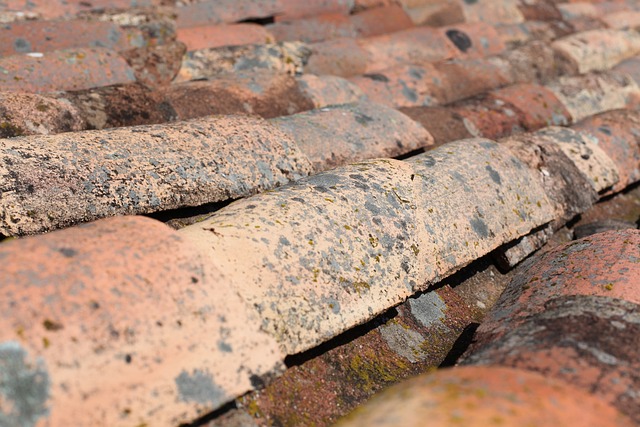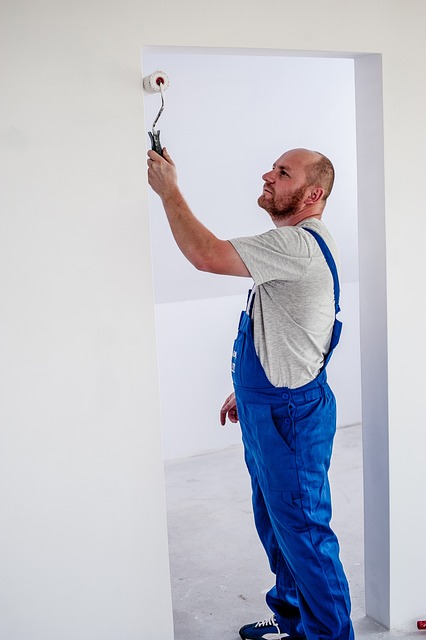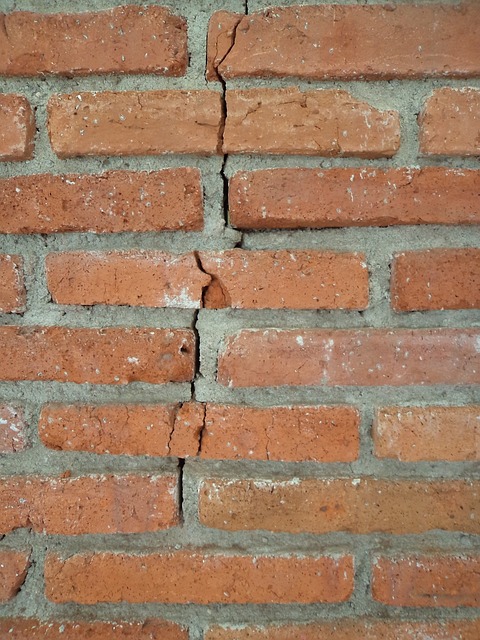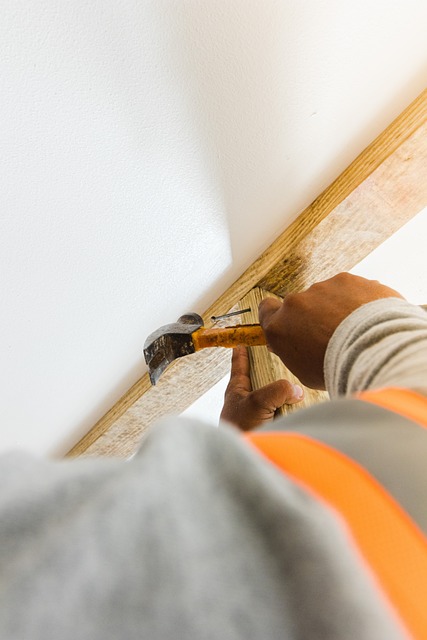Foundation bolt stabilization is a critical process for enhancing structural integrity and longevity, especially in regions prone to seismic activity or uneven soil conditions. It involves securing steel foundation bolts to provide added support for older buildings or structures on weak or unstable soil, preventing damage from earthquakes or settling. Key techniques include assessment, precise drilling and bolting by skilled professionals, tightening bolts to required torque, and offering warranties for peace of mind. Regular maintenance and inspections are vital for early detection of issues. Opting for "Foundation Repair with Warranty" provides long-term stability, structural integrity, and financial savings, demonstrating the service provider's commitment to quality.
“Discover the power of Foundation Bolt Stabilization, a game-changer in ensuring structural integrity and longevity for your property. This comprehensive guide explores the intricacies of this process, from understanding its fundamentals to debunking common myths. We delve into the causes of foundation movement, highlighting the critical role of foundation bolts. Learn about various stabilization techniques, installation processes, and maintenance tips.
Additionally, we examine real-world applications, success stories, and the undeniable benefits of choosing a Foundation Repair with Warranty Service, offering peace of mind for homeowners.”
Understanding Foundation Bolt Stabilization: A Comprehensive Overview

Foundation bolt stabilization is a critical process in ensuring structural integrity and longevity, especially in areas prone to seismic activity or uneven soil conditions. It involves securing foundation bolts, often made of steel, to provide added support for structures. This method is particularly useful when dealing with older buildings or those built on weak or unstable soil, aiming to mitigate potential damage caused by earthquakes or settling.
The process begins with an assessment to identify areas requiring stabilization. Next, skilled professionals drill precisely into the foundation and insert bolts, which are then tightened to the required torque for maximum hold. This involves specialized equipment and techniques to ensure the bolts provide adequate support. Foundation repair with a warranty is a key outcome, offering peace of mind that the structure is now more stable and less susceptible to future damage.
Common Causes of Foundation Movement and Their Impact

Foundation movement, a common issue in many structures, is caused by various factors that can lead to significant structural damage over time. One of the primary reasons is soil instability, where changes in moisture content cause the ground to expand or contract, putting pressure on the foundation. This movement can result in cracks in walls and floors, as well as misaligned doors and windows, a clear sign of troubled foundations. Another leading cause is poor initial installation or design, such as inadequate anchorage or improper spacing of bolts, which leaves the foundation vulnerable to shifting forces from nearby construction activities or geological instabilities like earthquakes.
These movements can have severe consequences, including structural instability, reduced building longevity, and even safety hazards. Foundation Repair with Warranty is a crucial service that addresses these issues by offering specialized solutions tailored to each unique case of foundation movement. Professionals in this field employ advanced techniques like underpinning, piering, or bolting to stabilize the foundation, ensuring the structure’s integrity and the peace of mind of its occupants.
The Role of Foundation Bolts in Structural Integrity

Foundation bolts play a pivotal role in ensuring structural integrity, especially in older buildings or those situated on unstable soil. These bolts are critical components of foundation repair with warranty, serving as anchors that hold the structure firmly in place. They transfer the weight and stress from the building to the underlying soil or rock, distributing the load evenly and preventing settling or shifting.
In cases where a building’s foundation has weakened over time, foundation bolt stabilization is a reliable solution. It involves strategically placing and tightening bolts to reinforce the existing foundation, providing a robust support system that safeguards against further damage. This method is particularly effective for structural repairs, offering long-term stability and peace of mind—a guarantee often associated with top-quality foundation repair with warranty services.
Types of Foundation Bolt Stabilization Techniques

Foundation bolt stabilization is a crucial technique used in foundation repair, offering durable solutions for various structural issues. There are several methods employed to achieve this, each tailored to specific needs and conditions. One common approach involves using specialized bolts, designed to withstand immense pressure and tension, which are inserted into existing foundation elements like concrete slabs or walls. These bolts act as reinforcement, providing added stability and preventing further movement or shifting of the structure.
Another technique leverages mechanical anchors, such as helical piles or strap anchors, that are strategically placed to augment the foundation’s integrity. This method is particularly effective for uneven settlements or slopes, offering a comprehensive solution with a focus on long-term durability. Moreover, modern technology has introduced advanced polymer injection systems that fill cracks and voids, enhancing the overall strength and stability of the foundation, thus ensuring reliable Foundation Repair with Warranty.
Step-by-Step Process of Installing Foundation Bolts

The process of installing foundation bolts, also known as pilings or tie-downs, is a crucial step in any foundation repair project, offering long-term stability and structural support. Here’s a breakdown of the steps involved:
1. Preparation: Begin by assessing the severity of the foundation issue and identifying the areas that require bolting. Clear the workspace of debris and ensure proper safety gear is worn. Create a plan outlining the placement of bolts for optimal reinforcement.
2. Drilling: Using professional-grade equipment, drill pilot holes into the foundation at predefined locations. The depth and diameter of the holes should be calculated based on soil conditions and structural requirements. This step ensures accurate bolt placement for maximum holding power. Once drilled, clean out any debris to prepare for bolting.
Ensuring Longevity: Maintenance and Care for Stabilized Foundations

Ensuring the longevity of your stabilized foundation is a crucial aspect of maintaining the structural integrity of any building. Regular maintenance and proper care are essential to safeguard against potential issues that may arise over time. One effective strategy involves conducting periodic inspections, allowing for early detection of any signs of damage or wear. This proactive approach enables homeowners and property managers to address problems promptly, preventing further complications.
When it comes to foundation repair with a warranty, many professionals recommend addressing any concerns immediately. This includes sealing cracks, repairing water damage, and ensuring proper drainage around the structure. By implementing these measures, you can mitigate risks and extend the lifespan of your stabilized foundation, providing peace of mind for years to come.
Benefits of Choosing a Foundation Repair with Warranty Service

When considering foundation repair, opting for a service that includes a warranty is an intelligent choice. This decision offers numerous advantages, providing peace of mind and long-term savings. A Foundation Repair with Warranty ensures that any issues or defects discovered during or after the repair process will be addressed without additional costs. This guarantees the customer’s investment is protected, allowing them to avoid unexpected expenses in the future.
The warranty also demonstrates the service provider’s confidence in their work. It signifies a commitment to quality and excellence, assuring customers that their foundation repairs were executed thoroughly and correctly. This level of assurance can be invaluable, especially for homeowners concerned about the structural integrity of their properties.
Real-World Applications: Success Stories of Bolt Stabilization

In the realm of construction and infrastructure, foundation bolts play a crucial role in ensuring structural integrity. When it comes to real-world applications, bolt stabilization has emerged as a game-changer, offering effective solutions for various challenges. Success stories across different industries highlight the impact of this technology.
For instance, in bridge construction, bolt stabilization techniques have been instrumental in preventing structural failures. By securing foundation bolts with advanced warranty-backed methods, engineers can navigate complex soil conditions, ensuring the longevity and safety of these vital structures. Similarly, in renovation projects, where existing foundations might be compromised, foundation repair with a warranty becomes essential. Bolting stabilization allows for precise adjustments, repairing cracks and misalignments, thereby restoring structural stability without major overhauls.
Common Myths Debunked: Separating Fact from Fiction in Foundation Bolt Stabilization

Many myths surround foundation bolt stabilization, often clouding the understanding of what truly works and what doesn’t. It’s crucial to separate fact from fiction to ensure effective and lasting foundation repair with a warranty. One common misconception is that simply adding more bolts will stabilize a foundation. In reality, over-bolting can lead to further damage, as it increases stress on the structure without addressing the root cause of the issue.
Another myth is that foundation bolt stabilization is a quick fix. While bolting can provide immediate support, it’s often just a temporary solution. To achieve lasting stability, it’s necessary to assess and address the underlying causes of foundation movement, such as soil conditions or structural flaws. Foundation repair with a warranty should be carried out by professionals who understand these complexities, ensuring not only stability but also long-term protection against future damage.
